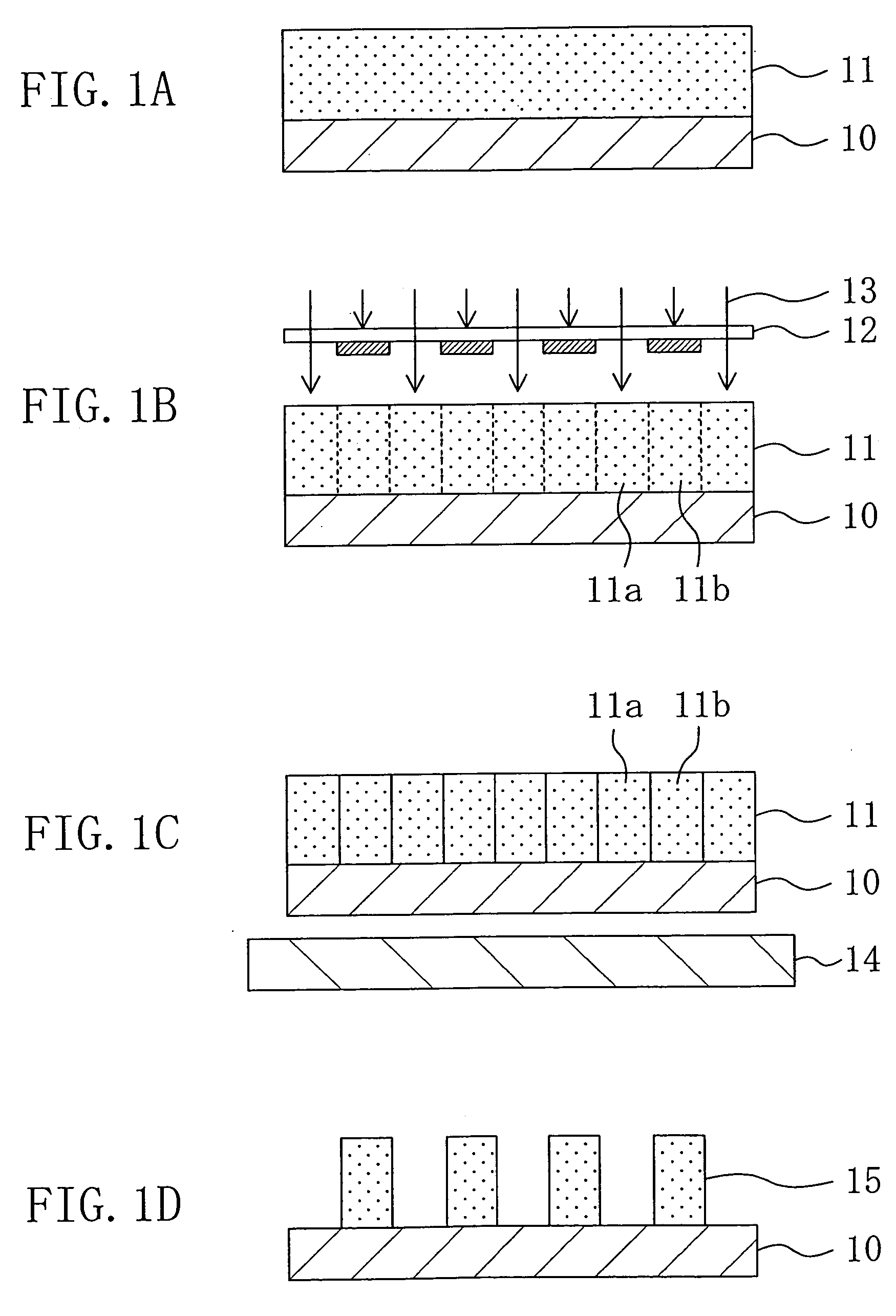Resist material and pattern formation method
a resist material and pattern technology, applied in the field of resist materials or chemically amplified resist materials, can solve the problems of difficult practical use of resist materials, and achieve the effects of improving the adhesiveness of the substrate of the resultant resist film, good solubility, and high hydrophilic property
- Summary
- Abstract
- Description
- Claims
- Application Information
AI Technical Summary
Benefits of technology
Problems solved by technology
Method used
Image
Examples
embodiment 1
[0062] A resist material according to Embodiment 1 of the invention will now be described.
[0063] The resist material of Embodiment 1 includes, as a base polymer, a polymer compound including a unit represented by a general formula of Chemical Formula 17 below. The weight average molecular weight of the polymer compound is preferably not less than 2,000 and not more than 100,000.
[0064] The resist material of Embodiment 1 may further include another polymer compound for the purpose of changing dynamical, thermal or other properties of a resultant film. In this case, the polymer compound to be further included is not particularly specified, and such an additional polymer compound is preferably included so that the proportion of the polymer compound including the unit represented by the general formula of Chemical Formula 17 can be not less than 50% and not more than 70% of the whole base polymer.
wherein R1, R2 and R3 are the same or different and are a hydrogen atom, a fluorine at...
embodiment 2
[0089] A pattern formation method according to Embodiment 2 of the invention will now be described.
[0090] In the pattern formation method of Embodiment 2, the resist material according to Embodiment 1 is used, and the pattern formation method includes the following procedures:
[0091] First, the resist material according to Embodiment 1 is applied on a substrate such as a silicon wafer in a thickness of 0.1 through 1.0 μm by spin coating or the like. Thereafter, the resultant substrate is subjected to pre-bake by using a hot plate at a temperature of 60 through 200° C. for 10 seconds through 10 minutes and preferably at a temperature of 80 through 150° C. for 30 seconds through 5 minutes. Thus, a resist film is formed.
[0092] Next, the resist film is irradiated through a photomask having a desired pattern with high energy beams such as deep UV, excimer laser or X-rays, or electron beams at exposure of approximately 1 through 200 mJ / cm2 and preferably approximately 10 through 100 mJ / ...
example 1
[0098] Example 1 for embodying the chemically amplified resist material of Embodiment 1 and the pattern formation method of Embodiment 2 will now be described with reference to FIGS. 1A through 1D.
[0099] First, a chemically amplified resist material having the following composition is prepared: [0100] Base polymer: polymer in which a first unit represented by Chemical Formula 28 and a second unit represented by Chemical Formula 29 are polymerized [0101] Acid generator: triphenylsulfonium nonaflate (2 wt % based on the base polymer) [0102] Solvent: propylene glycol monomethyl ether acetate
[0103] Next, as shown in FIG. 1A, the chemically amplified resist material having the above-described composition is applied on a semiconductor substrate 10 by spin coating, thereby forming a resist film 11 with a thickness of 0.2 μm. At this point, since the base polymer is alkali-insoluble, the resist film 11 is alkali-insoluble.
[0104] Next, as shown in FIG. 1B, the resist film 11 is subjected...
PUM
| Property | Measurement | Unit |
|---|---|---|
| wavelength | aaaaa | aaaaa |
| wavelength | aaaaa | aaaaa |
| wavelength | aaaaa | aaaaa |
Abstract
Description
Claims
Application Information
 Login to View More
Login to View More - R&D
- Intellectual Property
- Life Sciences
- Materials
- Tech Scout
- Unparalleled Data Quality
- Higher Quality Content
- 60% Fewer Hallucinations
Browse by: Latest US Patents, China's latest patents, Technical Efficacy Thesaurus, Application Domain, Technology Topic, Popular Technical Reports.
© 2025 PatSnap. All rights reserved.Legal|Privacy policy|Modern Slavery Act Transparency Statement|Sitemap|About US| Contact US: help@patsnap.com



